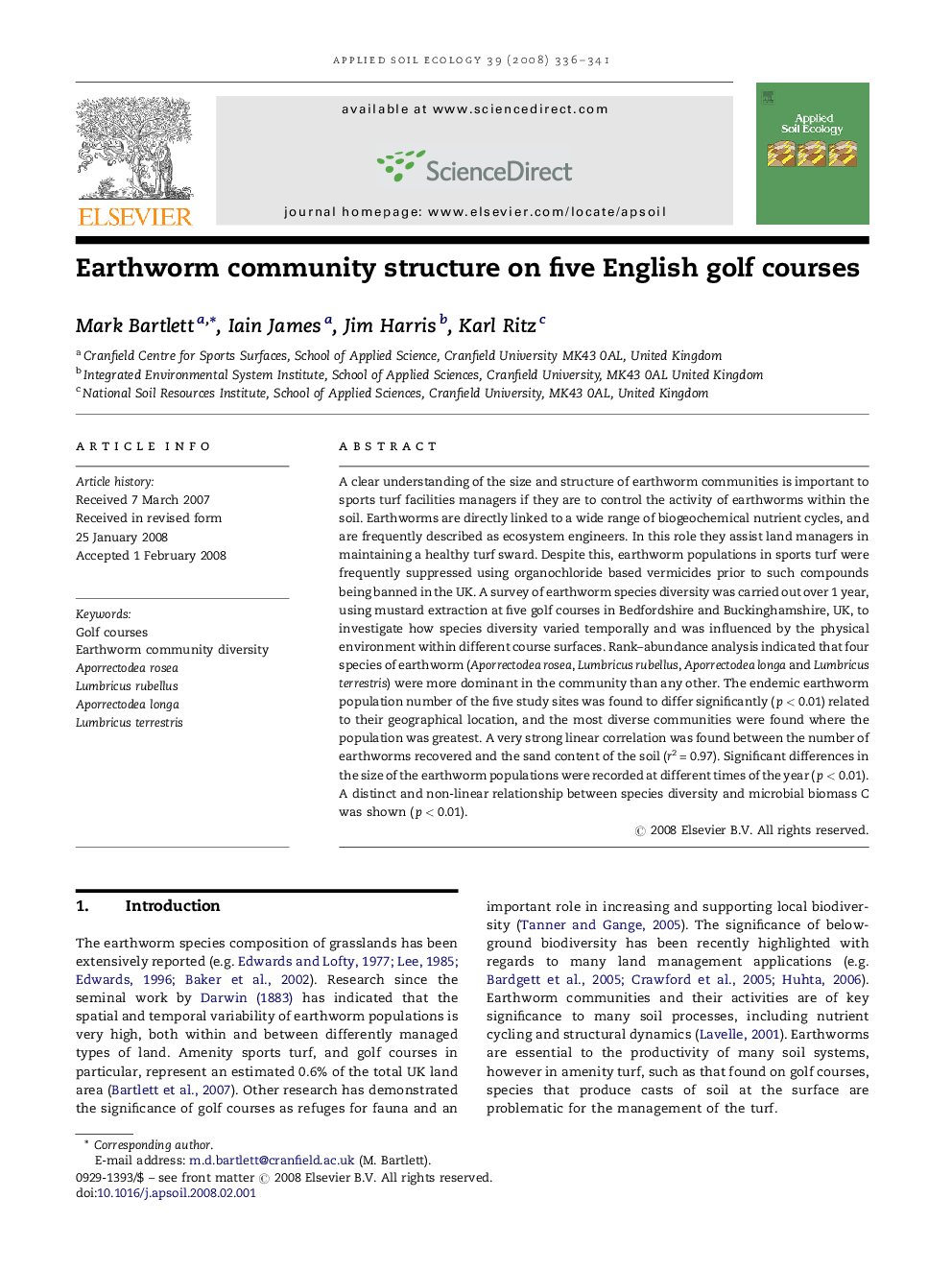| کد مقاله | کد نشریه | سال انتشار | مقاله انگلیسی | نسخه تمام متن |
|---|---|---|---|---|
| 4383182 | 1304252 | 2008 | 6 صفحه PDF | دانلود رایگان |
عنوان انگلیسی مقاله ISI
Earthworm community structure on five English golf courses
دانلود مقاله + سفارش ترجمه
دانلود مقاله ISI انگلیسی
رایگان برای ایرانیان
کلمات کلیدی
موضوعات مرتبط
علوم زیستی و بیوفناوری
علوم کشاورزی و بیولوژیک
بوم شناسی، تکامل، رفتار و سامانه شناسی
پیش نمایش صفحه اول مقاله

چکیده انگلیسی
A clear understanding of the size and structure of earthworm communities is important to sports turf facilities managers if they are to control the activity of earthworms within the soil. Earthworms are directly linked to a wide range of biogeochemical nutrient cycles, and are frequently described as ecosystem engineers. In this role they assist land managers in maintaining a healthy turf sward. Despite this, earthworm populations in sports turf were frequently suppressed using organochloride based vermicides prior to such compounds being banned in the UK. A survey of earthworm species diversity was carried out over 1 year, using mustard extraction at five golf courses in Bedfordshire and Buckinghamshire, UK, to investigate how species diversity varied temporally and was influenced by the physical environment within different course surfaces. Rank-abundance analysis indicated that four species of earthworm (Aporrectodea rosea, Lumbricus rubellus, Aporrectodea longa and Lumbricus terrestris) were more dominant in the community than any other. The endemic earthworm population number of the five study sites was found to differ significantly (p < 0.01) related to their geographical location, and the most diverse communities were found where the population was greatest. A very strong linear correlation was found between the number of earthworms recovered and the sand content of the soil (r2 = 0.97). Significant differences in the size of the earthworm populations were recorded at different times of the year (p < 0.01). A distinct and non-linear relationship between species diversity and microbial biomass C was shown (p < 0.01).
ناشر
Database: Elsevier - ScienceDirect (ساینس دایرکت)
Journal: Applied Soil Ecology - Volume 39, Issue 3, July 2008, Pages 336-341
Journal: Applied Soil Ecology - Volume 39, Issue 3, July 2008, Pages 336-341
نویسندگان
Mark Bartlett, Iain James, Jim Harris, Karl Ritz,